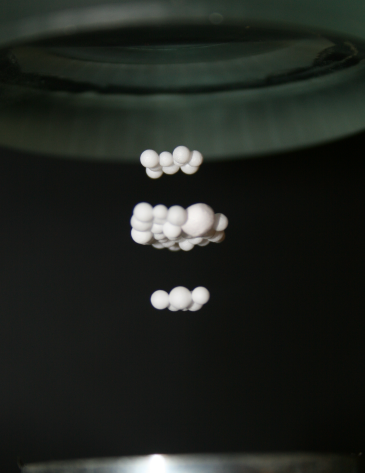The free event runs from 1 to 6 July in London and will showcase a wide variety of exhibits and events demonstrating cutting edge science and technology research.
Professor Daniel Robert from the School of Biological Sciences is exhibiting research with Dr Fernando Montealegre-Zapata from the University of Lincoln on the complex hearing mechanisms and production of sounds signals in insects.
Working with a South American species of bushcricket, they have discovered a previously unidentified hearing organ in its ear, 10 times smaller than a human ear. This research could lead to technological advances in bio-inspired acoustic sensor research, including microphones and cochlear implants.
Professor Robert said: “The ears of these Amazonian insects are extraordinary; they process sounds just like we humans do, but using a much smaller and simpler type of auditory receptors. We are learning from those to make small yet accurate and robust sensors that surpass current microphone technology.”
Their exhibition will allow you to experience how a Jurassic cricket used to sing. A hands-on demonstration will enable you to hear with your own ears what a cricket actually hears.
Professor Bruce Drinkwater from the Department of Mechanical Engineering is exhibiting work with Dr Peter Glynne-Jones from the University of Southampton that demonstrates how ultrasonic waves are being used in new and innovative ways in the field of engineering.
Ultrasound refers to the frequencies above the range of human hearing, used by bats, dolphins and insects. Scientists and engineers are able to use ultrasound in new ways, from finding miniscule cracks in aeroplane wings, to using it levitate objects as large as a centimetre and as tiny as an individual cell.
Professor Drinkwater said: “Ultrasonic levitation is amazing, with just the power of sound, small objects can be made to seemingly defy gravity. You can feel the ultrasonic forces and we are looking at using this to create virtual leavers and buttons - a completely new way of interacting with computers.”
Dr Patricia Sanchez- Baracaldo, a Royal Society Dorothy Hodgkin Fellow from the School of Geographical Sciences, is giving a talk in Café Scientifique on 1 July at 6pm – Oxygen: breathing life into our planet. She will address how oxygen got into our atmosphere and what role it played in the oxygenation of our planet.
Dr Sanchez Baracaldo said: “Genomics have advanced our understanding on the origin and evolution of photosynthesis. This is an exiting field because we can now address questions on how life has co-evolved with our planet and which processes paved the way for the origin of animals. “
The talk is free and tickets are issued on a first come first served basis.
The Royal Society was founded in 1660 and is the oldest scientific academy in continuous existence. It represents a Fellowship of many of the world’s most distinguished scientists. Its annual Summer Science exhibition attracts more than 10,000 visitors.


